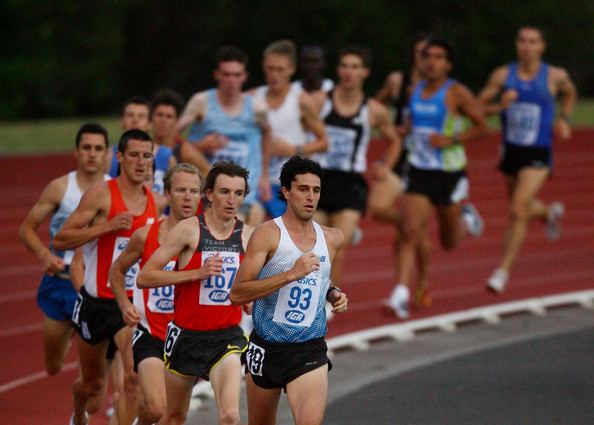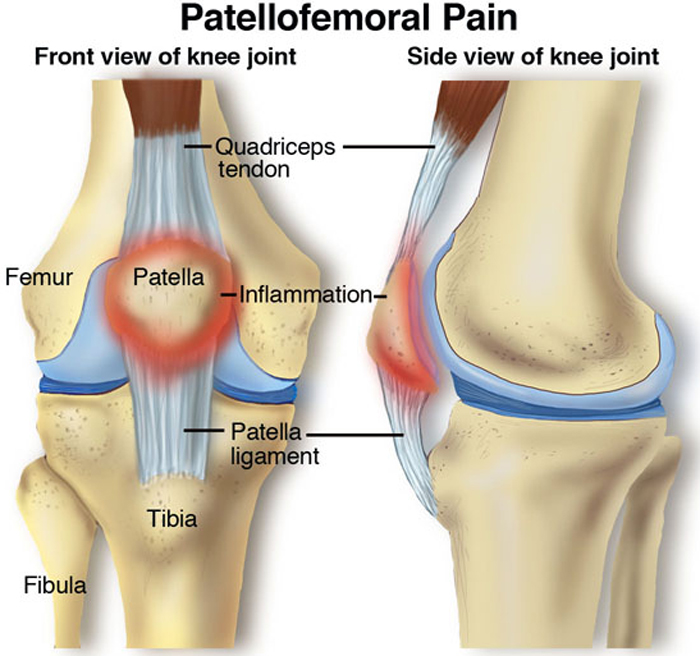The Most Common Cause of Knee Pain – Patellofemoral Syndrome (Runner’s Knee)
Written by Lachlan Chisholm

My Name is Lachlan Chisholm, I am a Physiotherapist and I have a Bachelor of Science (Exercise Science and Nutrition) and Master of Physiotherapy. I am a retired elite middle distance runner, a two-time Australian Champion over 1500m, multiple state title holder from 800m-3000m and an Australian representative.
I will regularly write a short article on common running injuries that I see in the clinic and what you should do to prevent the injury and minimise the damage to get you back on the road to recovery, if you are unlucky enough to end up with an injury. I will start with the most common knee injury I see, patellofemoral syndrome.
Patellofemoral Syndrome, also known as Runner’s Knee, is the most common knee injury I come across, symptoms usually start gradually and may progressively worsen over time, often without any history of injury.
Pain may be felt anywhere in front of the knee and may be on one or both legs. Symptoms are aggravated by activities as running, prolonged sitting, squatting or kneeling and going down stairs or hills more than going up. Pain is usually described as an ache, although certain movements may cause sharp pain or a burning sensation.
Patellofemoral pain (Runner’s Knee) has multiple causes including thigh rotation, weak thigh muscles, small high knee cap, poor hip and knee control, flat feet, and tight muscles, all leading to abnormal biomechanics resulting in poor kneecap tracking which results in increased load on the patellofemoral joint culminating in knee pain. It can also be caused by starting or suddenly increasing your training load.
Once you have developed patellofemoral syndrome (Runner’s Knee) you are best treated by conservative (non-surgical) measures. This will involve relative rest initially and you are best to see your physiotherapist for treatment who will assess you to determine the cause of your patellofemoral pain and assist you in building up the thigh muscles in the correct way, stretching the tight soft tissues and correcting other factors above and below the knee that contribute to this condition. Often your physiotherapist will show you how to tape the knee into the correct position to assist the knee cap to move in the groove on your thigh bone more efficiently. (I will go through a lot of these measures in part 2 of this article on prevention and treatment of patellofemoral syndrome). You should also take steps to reduce inflammation and swelling such as ice or even talk to your Doctor or chemist about anti-inflammatory medications.
Unfortunately, this condition rarely improves overnight and you will need to be diligent with your exercises and stretches to recover fully. It is not uncommon to have ongoing symptoms for 6 or more weeks so this is a good one to get on top of early as prompt appropriate intervention shortens recovery time.
Look out for my next article on tips to prevent and treat patellofemoral syndrome.
END
About Lachlan Chisholm
Lachlan was one of Australia’s leading 1500m runners for many years. His 1500m PB is 3:37 and he is a two-time Australian 1500m champion.
Lachlan currently works at Nowra Physiotherapy and Sports Injury Clinic
